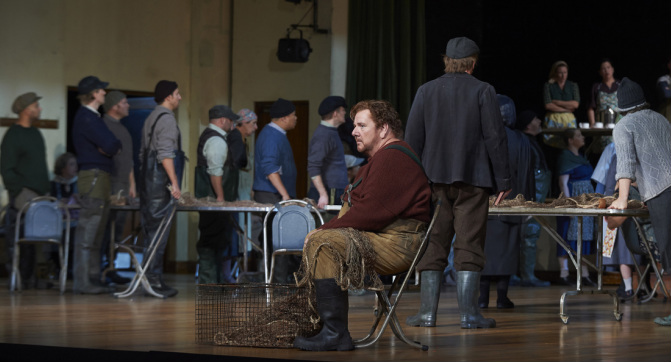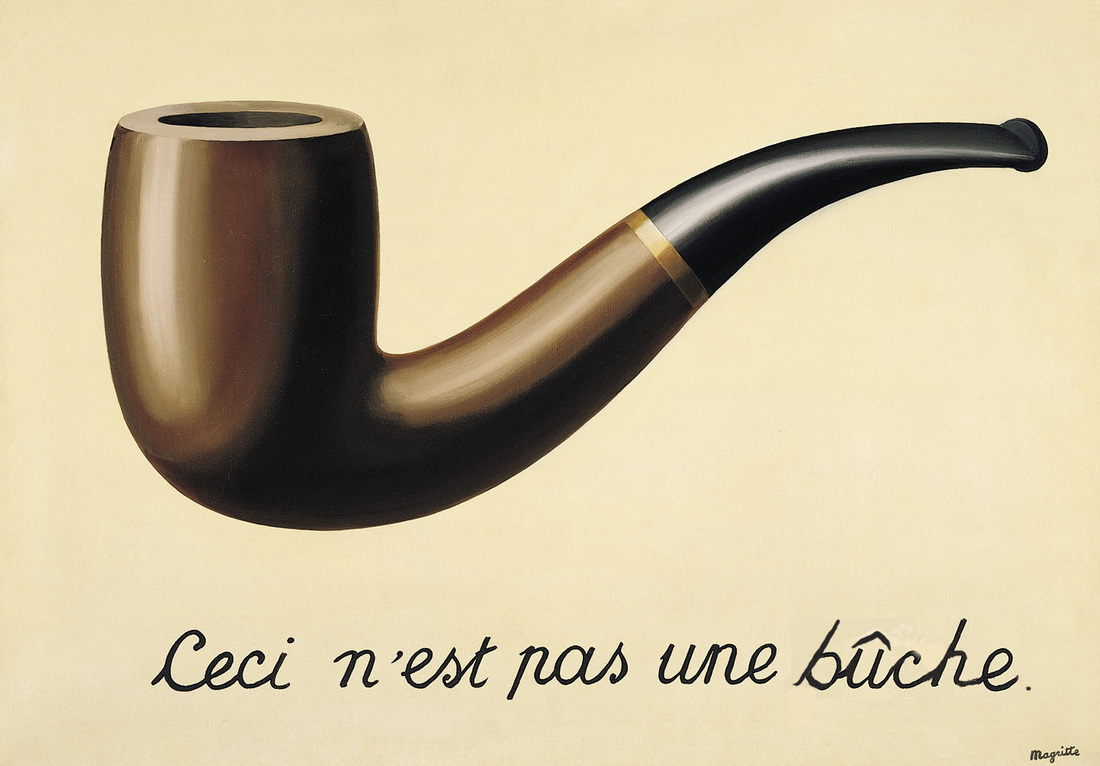Shimmering, terrible beauty: Peter Grimes reviewed
The Canadian Opera Company production of Peter Grimes, currently running at the Four Seasons Centre, is an artwork of shimmering, terrifying beauty.
With note-perfect direction from Neil Armfield and starring Ben Heppner in the title role, this production, originating with Houston Grand Opera and Opera Australia and new to the COC, offers one of the best opportunities to experience Benjamin Britten’s brooding masterpiece from 1945. Anyone excited by passionate, sophisticated musical theatre should see it before it closes Oct 26.
The opera is a searing look at the interplay between a man and his community and the private demons that plague them both. At its black heart is the fisherman Peter Grimes, a brutish loner whom the community keeps at a wary distance. One young apprentice has died in Grimes’ rough care and the arrival of another raises the community’s fearful anxieties to a fevered pitch.
As Grimes, Canadian star Ben Heppner gives a profoundly moving performance. The fact that the veteran tenor sounded raw and ragged at times on Oct 11 — he missed the Oct 5 opening night because of a cold — added to the performance’s poignancy. Grimes is an ugly character. In particular, Heppner’s third act mad scene was one of the most harrowing two minutes I’ve ever experienced in the theatre. After the second apprentice has died, Grimes slowly, crazily, comes to the realization that his dreams are dashed, all hope is lost. Distilled tragedy. As Balstrode, one of Grimes’ only friends sings, “When horror breaks one heart, all hearts are broken.”
Alan Held as Balstrode, with his beautiful booming voice, was another standout in a very strong cast. The only disappointment was Ileana Montalbetti in the crucial role of Ellen Orford. She is a powerful soprano and that power is necessary to soar above Britten’s churning orchestrations. But as the widow who tries to soothe Grimes’ rages, who shares his dreams of something happier, Montalbetti’s tone could have been a little sweeter at times. She did have some lovely tender moments, however, like in the second act quartet among the women who “comfort men from ugliness.”
The COC chorus is the other great standout. The community, or Borough, is really a character unto itself with conflicting emotions that ebb and flow, where mob fury can erupt at any moment. The chorus ably delivered the colours and the power of such a beast.
Britten began work on Peter Grimes when stranded in the US due to the outbreak of World War II; he was inspired by the poetry of George Crabbe. The opera is a nostalgic but steely-eyed look at the small fishing village of Alderburgh where Crabbe was born, near where Britten grew up. Director Armfield emphasizes the opera’s nostalgia by increasing the role of Dr. Crabbe, a non-singing part that only garners a couple of direct references in the libretto. Armfield has Crabbe onstage throughout silently observing the action as if in a dream or as if he’s actively conjuring up the drama. It’s a simple and very effective addition.
That Britten chose to write about an outcaste, a child abuser no less, living in his actual hometown is nothing short of astonishing. When Britten and his partner Peter Pears, the tenor who originated the role, returned to the UK, they bought a home in Alderburgh. This at a time when homosexuality was illegal in the UK and war heroes like Alan Turing were being chemically castrated because they were gay. By moving back to Alderburgh as a successful composer, it’s as if Britten was living the vindication, the happy ending Grimes so desperately longed for.
Set designer Ralph Myers places the action in a large, drab, A-framed community hall with a curtained-off stage at the back, fluorescent lights and orange Formica tables. It’s mid-1940s England but it feels very familiar. Damien Cooper’s evocative lighting design only hints at the rising and subsiding tumult outside the community hall. Many a production of Peter Grimes has floundered on the near impossible task of depicting the ocean in all its moods. Wisely, in this production, the creative team leaves that job to Britten. Forget 3D movies; letting your imagination run riot to this glorious music is truly an immersive experience.
Armfield’s direction and Myer’s design brought home what I know see as an obvious truth about the opera. With all the score’s dramatic storm sections and evocations of the sea, I’ve often thought that the sea itself was a character or a central force in Peter Grimes. Not so. The community is the sea, the Borough is an ocean of unseen dangers, of turbulent passions and unexpected beauty, a living thing of unimaginable power.
The final image crafted by Armfield sees one of the community’s young boys walking upon a long section of rope as if it were a tightrope. The world, whether writ small as in the life of one man, or writ large as in the conflagration consuming Europe at the time Britten composed the opera, is on a knife’s edge. Care and respect must be paid to the irrational, uncontrollable forces all around us.
It was thrilling to hear Heppner singing on a knife’s edge in such a wonderfully conceived production.
With note-perfect direction from Neil Armfield and starring Ben Heppner in the title role, this production, originating with Houston Grand Opera and Opera Australia and new to the COC, offers one of the best opportunities to experience Benjamin Britten’s brooding masterpiece from 1945. Anyone excited by passionate, sophisticated musical theatre should see it before it closes Oct 26.
The opera is a searing look at the interplay between a man and his community and the private demons that plague them both. At its black heart is the fisherman Peter Grimes, a brutish loner whom the community keeps at a wary distance. One young apprentice has died in Grimes’ rough care and the arrival of another raises the community’s fearful anxieties to a fevered pitch.
As Grimes, Canadian star Ben Heppner gives a profoundly moving performance. The fact that the veteran tenor sounded raw and ragged at times on Oct 11 — he missed the Oct 5 opening night because of a cold — added to the performance’s poignancy. Grimes is an ugly character. In particular, Heppner’s third act mad scene was one of the most harrowing two minutes I’ve ever experienced in the theatre. After the second apprentice has died, Grimes slowly, crazily, comes to the realization that his dreams are dashed, all hope is lost. Distilled tragedy. As Balstrode, one of Grimes’ only friends sings, “When horror breaks one heart, all hearts are broken.”
Alan Held as Balstrode, with his beautiful booming voice, was another standout in a very strong cast. The only disappointment was Ileana Montalbetti in the crucial role of Ellen Orford. She is a powerful soprano and that power is necessary to soar above Britten’s churning orchestrations. But as the widow who tries to soothe Grimes’ rages, who shares his dreams of something happier, Montalbetti’s tone could have been a little sweeter at times. She did have some lovely tender moments, however, like in the second act quartet among the women who “comfort men from ugliness.”
The COC chorus is the other great standout. The community, or Borough, is really a character unto itself with conflicting emotions that ebb and flow, where mob fury can erupt at any moment. The chorus ably delivered the colours and the power of such a beast.
Britten began work on Peter Grimes when stranded in the US due to the outbreak of World War II; he was inspired by the poetry of George Crabbe. The opera is a nostalgic but steely-eyed look at the small fishing village of Alderburgh where Crabbe was born, near where Britten grew up. Director Armfield emphasizes the opera’s nostalgia by increasing the role of Dr. Crabbe, a non-singing part that only garners a couple of direct references in the libretto. Armfield has Crabbe onstage throughout silently observing the action as if in a dream or as if he’s actively conjuring up the drama. It’s a simple and very effective addition.
That Britten chose to write about an outcaste, a child abuser no less, living in his actual hometown is nothing short of astonishing. When Britten and his partner Peter Pears, the tenor who originated the role, returned to the UK, they bought a home in Alderburgh. This at a time when homosexuality was illegal in the UK and war heroes like Alan Turing were being chemically castrated because they were gay. By moving back to Alderburgh as a successful composer, it’s as if Britten was living the vindication, the happy ending Grimes so desperately longed for.
Set designer Ralph Myers places the action in a large, drab, A-framed community hall with a curtained-off stage at the back, fluorescent lights and orange Formica tables. It’s mid-1940s England but it feels very familiar. Damien Cooper’s evocative lighting design only hints at the rising and subsiding tumult outside the community hall. Many a production of Peter Grimes has floundered on the near impossible task of depicting the ocean in all its moods. Wisely, in this production, the creative team leaves that job to Britten. Forget 3D movies; letting your imagination run riot to this glorious music is truly an immersive experience.
Armfield’s direction and Myer’s design brought home what I know see as an obvious truth about the opera. With all the score’s dramatic storm sections and evocations of the sea, I’ve often thought that the sea itself was a character or a central force in Peter Grimes. Not so. The community is the sea, the Borough is an ocean of unseen dangers, of turbulent passions and unexpected beauty, a living thing of unimaginable power.
The final image crafted by Armfield sees one of the community’s young boys walking upon a long section of rope as if it were a tightrope. The world, whether writ small as in the life of one man, or writ large as in the conflagration consuming Europe at the time Britten composed the opera, is on a knife’s edge. Care and respect must be paid to the irrational, uncontrollable forces all around us.
It was thrilling to hear Heppner singing on a knife’s edge in such a wonderfully conceived production.



 RSS Feed
RSS Feed